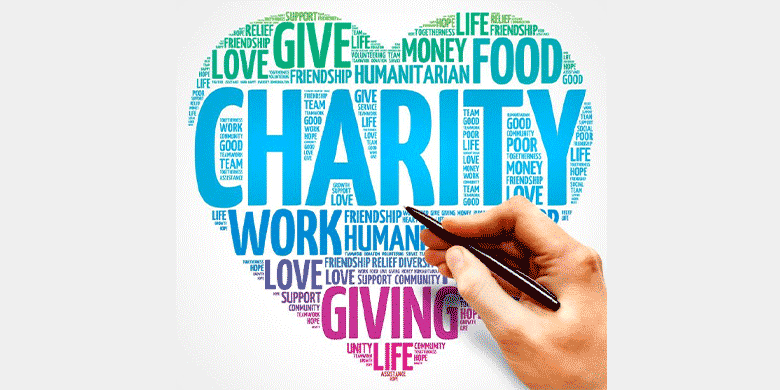
8 February, 2024
Keyrings and Community: Leveraging Keyrings for Charitable Causes
Keyrings are often considered mundane, everyday items that serve a functional purpose—holding keys. However, they can serve a much higher purpose when used strategically, especially in community building and charitable campaigns. The power of keyrings as an overlooked but impactful tool in rallying communities and promoting charitable causes.
A Brief History of the Keyring
Keyrings have been around for centuries and have undergone a fascinating evolution. In their earliest forms, they were rather simplistic objects made of wood or metal, which primarily secured valuables like keys to homes or storage chests. Over the years, with the advent of modern manufacturing techniques, keyrings began to adopt more complex designs, often incorporating ornamental aspects such as engravings, small sculptures, or even miniaturised tools.
Today, they have transcended their utilitarian origins to serve aesthetic and symbolic purposes. They have become small canvases for personal expression and identity, allowing individuals to showcase their affiliations, interests, or beliefs. Whether it's a keyring representing a favourite sports team or one that stands for a social cause, these little accessories have turned into powerful symbols. In this new role, they have become potent instruments for charitable campaigns, serving as miniature billboards that people carry with them, thus amplifying the reach and impact of a given cause.
A Small Item with Big Impact

1) Easy Distribution
One of their main advantages is their ease of distribution, facilitated by their small size and lightweight nature. This makes it convenient for organisations to distribute them in various ways, expanding the range of potential touchpoints with the public. For instance, they can be given away at community events or fundraisers as freebies, increasing the organisation's visibility. They can also be included in direct mail campaigns as a tangible gift that not only pleases recipients but also serves as a continual reminder of the charity's mission. E-commerce has further expanded this, allowing them to be listed in online charity shops where supporters from around the globe can purchase them.
2) Cost-Effective
They offer a highly cost-effective way to spread awareness or raise funds. Their production costs are typically low, particularly when ordered in large quantities. Furthermore, the flexibility in material choice - from low-cost plastics to more luxurious metals - lets charities scale their campaigns according to their budgets. This allows even small, grassroots organisations to take advantage of them as promotional tools. Economies of scale often come into play here; as the volume of production increases, the cost per unit tends to decrease, making keyrings even more cost-effective for larger campaigns.
3) High Usability
They are not just promotional items that people receive and forget; they are functional objects used in daily life. Most people have at least one keyring for their home or car keys, making these items highly visible and frequently handled. This constant interaction ensures that the message or logo imprinted on them remains at the forefront of the user's mind. Unlike a leaflet or brochure that might be glanced at once and then discarded, it is a lasting item. Its frequent visibility serves as a long-term reminder of the charitable cause, making the individual more likely to engage further, whether by donation, volunteering, or simply spreading the word.
Tailoring Keyrings for Charitable Causes
1) Customisation
The advances in manufacturing technology have made it exceedingly convenient to customise keyrings, thereby increasing their effectiveness as tools for charitable campaigns. Customisation options can range from material choices to design complexities. For instance, for campaigns focused on environmental sustainability, ones made from recycled or eco-friendly materials can be produced. Similarly, intricate designs or inscriptions can be etched or printed onto them, allowing for complex messages or images to be effectively conveyed. The ability to customise them gives charities the opportunity to create a unique item that aligns perfectly with their mission and message, enhancing its impact and memorability.
2) Emotional Connection
While they are, by nature, functional items, their impact is magnified when they carry emotional resonance. Certain colours, shapes, or symbols can evoke specific emotions or memories, making them more engaging and memorable. For example, those produced to support breast cancer awareness might be designed in shades of pink - the colour universally associated with this cause. Similarly, ones that support child welfare causes could incorporate playful and youthful designs. By aligning the it's design with the emotional language of the cause, charities can deepen the connection supporters feel towards both the item and, more importantly, the mission it represents.
3) Community Identity
They can also serve as symbols of community identity and unity. In the context of community-building initiatives, such as neighbourhood watch groups or local charitable organisations, they can be used as badges of membership. Imagine a neighbourhood watch group distributing them to all its members. Not only does it serve a functional purpose, but it also instils a sense of collective identity and pride among the group members. It turns into a small but significant symbol of shared values and community spirit, contributing to the strengthening of communal bonds. By acting as physical tokens of a shared identity or cause, they offer an enduring way to foster community cohesion.
Case Studies

1) Non-profits
- Oxfam: One of the pioneering non-profits in the use of keyrings for fundraising is Oxfam. Theirs are often made from sustainable materials, reflecting the organisation's commitment to social responsibility. They are sold in Oxfam's retail stores and their online shops. By purchasing it, consumers receive a useful item and contribute to Oxfam's various global initiatives, such as alleviating poverty and advocating for social justice.
- Red Cross: The Red Cross has used them as part of emergency preparedness campaigns. They include mini first-aid kits or emergency contact information. By integrating functionality with fundraising, they have created an item that raises funds and fulfils a practical need, aligning perfectly with their mission to provide emergency assistance.
- World Wildlife Fund (WWF): WWF has produced animal-themed ones, often resembling endangered species, to raise awareness about wildlife conservation. These are usually sold around significant dates like Earth Day to maximise impact. The proceeds go towards their various conservation projects, providing a cute yet powerful reminder of the need to protect our planet's biodiversity.
2) Social Movements
- Black Lives Matter: This movement has used them featuring slogans or symbols like the raised fist to help raise awareness and funds. They are sold online or at rallies, and the proceeds go towards community programmes and legal defence funds. Each one serves as a symbol of solidarity and a way to support the cause financially.
- Pride Organizations: LGBTQ+ rights organisations frequently use rainbow-themed keyrings to promote inclusivity and diversity. They are often sold during Pride Month or at Pride events, with the proceeds going towards LGBTQ+ advocacy and support services. In addition, they symbolise pride and inclusivity that people can carry with them daily.
- Environmental Groups: Social movements focusing on environmental conservation have also adopted them as a fundraising tool. For example, ones made from recycled materials and bearing messages like "Save the Planet" are sold to raise money for initiatives such as tree-planting or beach clean-ups. These keyrings offer supporters a tangible way to remember and discuss environmental issues.
These examples show they offer a versatile and effective means of supporting both non-profits and social movements. Whether it's by raising funds, increasing awareness, or sparking conversations, keyrings have proven to be a valuable asset in advancing various causes.
Challenges and Considerations
They offer a multitude of benefits for charitable campaigns, but it's essential to employ them in a manner that aligns with the values and mission of your organisation. One pivotal aspect to consider is the manufacturing process. If, for instance, your organisation's focus is on environmental sustainability, it would be counterproductive to produce ones that aren't eco-friendly. Likewise, if your charity supports fair labour practices, it becomes paramount to ensure they are produced under ethical conditions.
The materials used, the labour involved, and even the shipping and distribution methods should be scrutinised to ensure that they align with your organisation's ethos. This ensures they remain a true embodiment of what your charity or movement stands for and not just a token.
Summary
Promotional Keyrings may be small in size, but their potential impact on charitable campaigns and community building is significant. Their high visibility and usability and low production costs make them a practical choice for charities looking to raise awareness or funds. However, the true power lies in their ability to establish emotional connections and foster community identity, making them an indispensable tool in modern philanthropic efforts.
The Keyrings Only Team

